As is often the case, a market monopoly typically exploits its position: inflating prices, limiting savings, and attempting to eliminate competitors and alternatives that enable users to avoid the monopolistic product. LinkedIn operates no differently.
To avoid repetition, we will provide links to a report by LinkedIn expert Kevin D. Turner and comprehensive testing of the issue by sourcing expert Marcel van der Meer. In this overview, we will focus on why this is detrimental, the extent of the issue, and potential responses
A Brief on the Situation
Previously, LinkedIn made candidate information, including employment and professional details, indexable by search engines. Recruiters used this feature to conduct searches directly via Google, using search operators without logging into LinkedIn, thereby circumventing LinkedIn restrictions. This was particularly valuable for identifying passive candidates not actively seeking employment or advertising their openness to new opportunities.
Now, such information is scarcely provided to search engines, meaning LinkedIn is compelling users to utilize its own platform—specifically, its costly premium version for recruiters.
The Impact of Recent Changes
Pros
- One clear benefit of recent updates is that LinkedIn users’ personal data has become slightly more private and confidential. However, this marginal gain likely wasn’t LinkedIn’s main objective when implementing these changes.
- LinkedIn’s increased sales and revenue, but that’s not our cause for celebration.
Cons
- The downside is the strengthening of an unhealthy monopoly in the HR Technology market, where there is a lack of effective checks and balances.
- Recruiters and sourcers now have one less powerful tool available at no cost. As a result, the already challenging task of talent acquisition is becoming even more difficult—particularly given the significant talent shortage across industries requiring high qualifications.
- These changes also limit the ability to engage with a broader range of candidates, especially those not actively seeking employment (passive candidates), leading to an imbalance favouring active candidates. This is problematic, as active candidates often do not suffice to meet comprehensive hiring plans.
- Recruitment budgets are likely to rise noticeably for those purchasing LinkedIn’s premium packages, a double blow, especially in times of overall budget cuts. This will especially impact small startups, as the cost-effectiveness of these expenses is perceived to be lower for smaller companies, making the ROI quite questionable.
- Established recruitment processes and frameworks, candidate funnels, and some third-party hiring tools that relied on Boolean search may now become less effective or even break down.
- Furthermore, these changes could make fostering diversity, equity, and inclusion (DEI) more challenging. Connecting with underrepresented groups will require additional effort.
In the broader scheme, excessive fragmentation of the talent management products and HR services ecosystem benefits no one—not technology providers, employers, or jobseekers—in the long run. This fragmentation is set to increase as market participants look for alternatives that currently struggle with poor integration, both technically and in terms of information sharing for informed, data-driven decisions.
LinkedIn’s pricing:
|
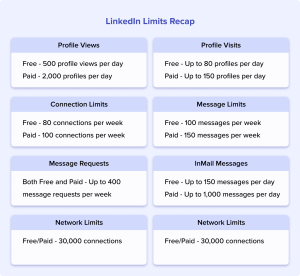
A risk that should not be ignored
The gradual restriction of data access by LinkedIn is underway, but is this the primary concern for recruiters? Not quite. Calls for increased regulation and oversight of the industry are expected to grow, particularly for those operating under European Union legislation—though the United States has its nuances—which is vigorously attempting to regulate data protection, including GDPR.
While these intentions are sound, the current implementation severely hampers businesses (a glance at the macro statistics that compare the growth of EU businesses with other regions is revealing). This regulation impacts a range of businesses, from HR to AI, which also actively collect and utilize data, including personal information.
Given this backdrop, it’s imperative that companies diversify their talent acquisition strategies and team-building methodologies for scaling their business—needed yesterday. Because moving forward, it’s only going to get tougher.
How to Rebalance Candidate Search Amidst Regulatory Pressures
If your active sourcing relied heavily on X-Ray search, you need to offset its diminishing returns with alternative sources. Here’s what you can do:
1. Back to Handshakes: Leverage Referrals
Referral recruitment remains one of the most effective methods for filling vacancies. When trusted individuals recommend a professional, their suggestions carry weight.
2. Unite and Conquer
Collaboration is more powerful than solo efforts. Viewing peers as competitors and isolating from them is no longer viable. Collective efforts, creating industry associations, and communities of like-minded professionals have proven effective.
Our experience shows that such communities foster mutual support, exchange of insights and work hacks, recommendations, and matching top candidates with clients, collaborative project work, and the promotion of ethical business standards. This is one of the most underrated tactics to strengthen your recruiting game in 2024.
3. KYC (Know Your Candidate): Efficiently Build and Manage Your Talent Pool
Previously, losing touch with top candidates due to oversight in adding them to the ATS or failing to note their strengths was just a costly mistake. Now, the stakes are way much higher.
Engage, communicate, and foster long-term relationships. The business practice known as “know your customer,” which has gained a negative compliance connotation, should be a priority with a positive twist for those in hiring: “know your candidate (and keep in touch).”
4. Diversify Sourcing Channels to Enrich Your Talent Pool:
- Work on your employer branding. It ensures a steady flow of individuals who resonate with your company’s culture, values, and actions.
- Boost inbound traffic:
- Actively promote career opportunities (switch to “We are hiring!” promo mode).
- Simplify the Candidate Experience at every touchpoint (applying should be effortless and not overly demanding).
- Post job openings on quality Job Boards and filter through the inbound traffic to identify truly outstanding candidates.
- Don’t forget about sourcing on social media, professional forums, Discord channels, and professional chats.
- Attend relevant offline (and even online) events, which can be quite effective.
- Create your targeted talent community, like a job search hub (jobseekers club), conduct specialized educational courses, or form a “professionals’ club” in areas like Data Science/AI/development, depending on your focus.
As the community matures and gains autonomy, it will bring top-notch professionals to your projects.
5. Beyond LinkedIn: Discover New Alternative HR Tech Platforms and HR Software
| Now is the prime time for alternative professional platforms to fill the void created by LinkedIn’s recent actions.
Quality alternatives, potentially including open-source options, could garner real user support if executed correctly:
The rapid development of automation systems and AI/ML, big data management, and enhanced B2B analytics could facilitate this transition. |
Beyond products wholly dependent on LinkedIn, independent platforms exist today that can assist in searching, flexibly filtering candidates, finding their contacts, and communicating with them. Wandify is doing exactly that.
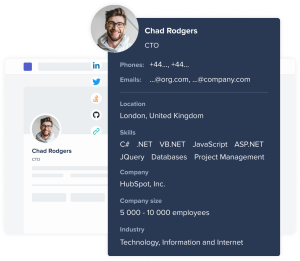
Seven Key Advantages of Wandify:
- It enables targeted talent searches using advanced search filters. Users can create any combination of search criteria and filters to display only the most relevant candidates (see Image 1).
- Users can organize candidates into folders for easy management and sorting. For instance, you can categorize and compile candidates by location, job titles, technology stacks, etc. (see Image 2).
- Wandify enhances search quality with smart AI-powered query enrichment, incorporating essential related terms, synonyms, technologies, and skills into the search (see Image 3).
- For added convenience, a Chrome Extension is available for the service.
- Wandify operates independently of the platform restrictions described in this article. Even if LinkedIn or any other connected platform completely closes off profile access, Wandify’s search functionality remains uninterrupted.
- To extend functionality, users can take advantage of the available API.
- The solution adopts a democratic approach to pricing, with packages starting from a Free plan.
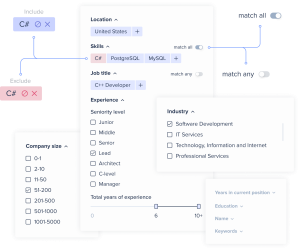
Image 1. Wandify search criteria builder
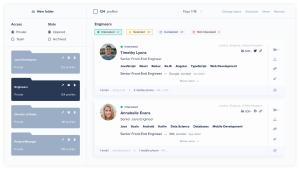
Image 2. Folders
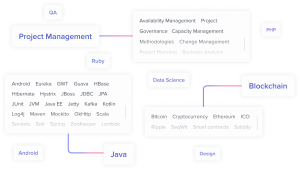
Image 3. Smart matching of synonyms and related technologies.
Does it really work?
The effectiveness has been practically measured, and the estimated practical benefits are as follows:
- 50% reduction in recruitment costs
- Double the response rate when contacting relevant candidates.
- Reduced time to find a relevant candidate by 50%.
👉 You can experience the benefits yourself by trying the AI-powered sourcing tool.
6. Create Your Own Tools, Just Like We Do
Companies often develop their own recruitment CRM, ATS (Applicant Tracking System) or other HR systems because the standard solutions lack certain modules or integration capabilities. With the rise of no-code tools—now further enhanced by AI—creating these custom tools has become even easier.
Conclusion
LinkedIn’s recent move to eliminate Boolean Search outside its platform is inconvenient, but mitigating its negative impact is not as difficult as it first appears. Creativity and perseverance will help overcome this hurdle.
It’s worthwhile to experiment with alternative search channels, platforms and hiring tools, and to focus on extensively building your employer brand. Activate


